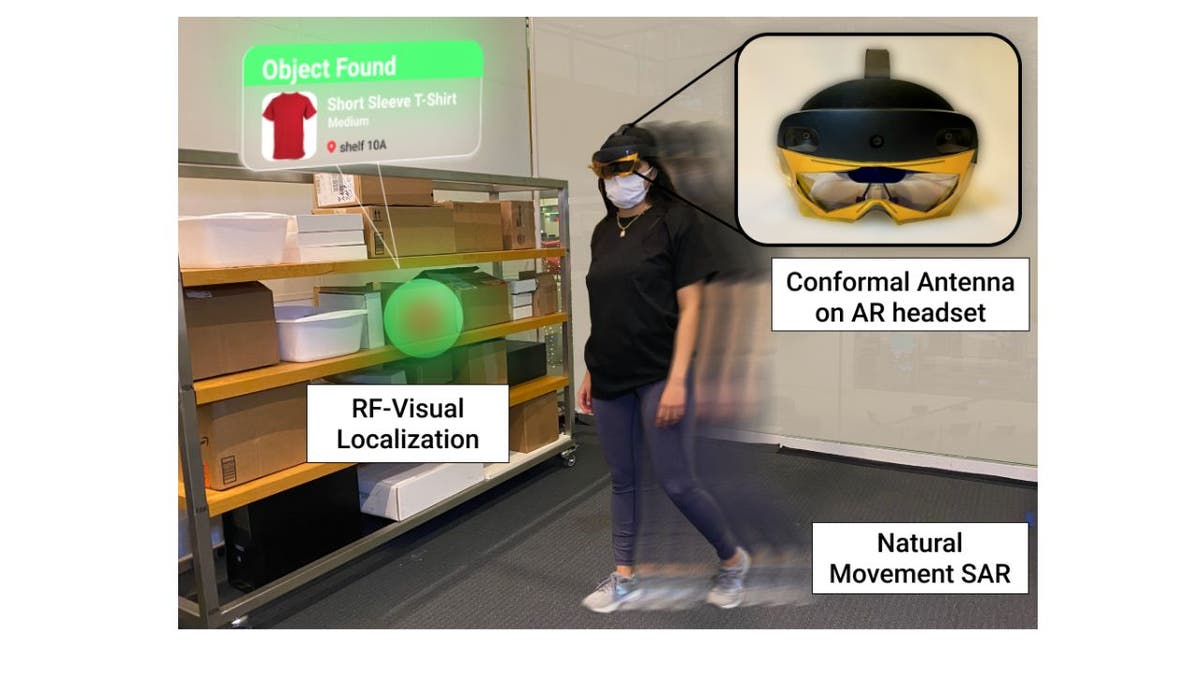Kurt "CyberGuy" Knutsson on how creepy augmented reality enables seeing through walls
MIT is developing a new headset that would give its user the capability to see through walls.
Artificial intelligence is just one small sector of technology that is rapidly growing. The newest tech advancement at MIT now is augmented reality. Researchers are currently working on a device that would help people see beyond walls and other barriers. Although it might sound creepy, it also has some powerful benefits. We've got more information now about how the device works.
What is the Augmented Reality device being worked on at MIT?
According to MIT's Media Lab, this invention is called X-AR, and it's an augmented reality headset that can allow people to see objects that are hidden behind walls, in boxes and more. It is meant to be an add-on to Microsoft's HoloLens.
FREE UP STORAGE SPACE ON YOUR ANDROID WITH THIS UPDATED APP
The way it works is by combining new antenna designs, wireless signal processing algorithms and AI-based fusion of different sensors.
The wide-band antenna on the headset allows the HoloLens to locate specific objects that are outside the wearer's line of sight. The object it is trying to locate must have what's known as a Radio Frequency Identifier (RFID). These commonly used RFIDs are found on numerous objects like clothing items and credit cards.
As long as the headset is within 15 feet of the object, and the object has an RFID, the antenna on the headset will be able to send out signals, and the RFID on the object will reflect a signal back like a mirror. RFIDs are battery-less and only cost around 2 to 3 cents each, which could make them much more useful and practical than products like Apple AirTags.
MORE: ARTIFICIAL INTELLIGENCE DUBBED 365 COPILOT COMING TO DOCUMENTS YOU WRITE, MICROSOFT SAYS
Is this the new solution for finding lost items?
It very well could be. The way the technology is being built, I don't see why this wouldn't come in handy for everyday use. For example, if you're looking for a specific shirt in a large pile of clothes, the headset will be able to help you locate it. However, this headset is capable of doing much more than that. This can also be super useful for warehouse workers trying to locate a specific item.
DON'T WAIT UNTIL IT'S TOO LATE: SAFEGUARD YOUR MEDICARE NUMBER NOW

MIT is developing a headset that could even be used by first responded. (Jimmy Day)
The researchers at MIT are hoping to have first responders use the headset in rescue missions as well. The headset is capable of using radio frequency signals to tell if someone's heart is beating or if they are breathing. For example, if there were a major disaster and someone was trapped in a location where they couldn't get out, like a collapsed building, a first responder wearing this headset would theoretically be able to locate the person quickly as long as they were breathing.
MORE: YOUR SECRETS ARE NOT SO SAFE WITH AI CHATBOTS LIKE CHATGPT
Are there any risks with using the X-AR?
The only concern that I have is privacy. If this product were to land in the wrong hands, it seems like it could be used to spy on people at their homes and businesses. However, researchers at MIT are still working on the headset, and it doesn't seem like something that they plan to release to the public any time soon. Hopefully, they have safety measures in place before that happens, so we'll have to see how the product develops further.
HOW TO PROPERLY DISPOSE OF YOUR NON-FUNCTIONAL IPHONE

The headset has many capabilities which could make privacy a concern. (Signal Kinetics)
Final thoughts
As with any new technology, there are concerns about its potential misuse. While the X-AR headset has incredible potential for helping people locate lost items and hidden objects, it's important to balance the benefits with potential privacy concerns.
CLICK HERE TO GET THE FOX NEWS APP
As MIT continues to develop this technology, it will be important to ensure that safeguards are in place to protect individuals' privacy and security.
What do you think of the X-AR? Could you use this in your daily life? Will this be a good thing for a bad thing for society? Let us know by writing us at CyberGuy.com/Contact.
For more of my tips, subscribe to my free CyberGuy Report Newsletter by heading to CyberGuy.com/Newsletter.
Copyright 2023 CyberGuy.com. All rights reserved.





















